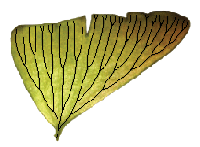Difference between revisions of "IQ-Tree"
Kevin Keegan (Talk | contribs) (→Goals) |
Kevin Keegan (Talk | contribs) |
||
| Line 8: | Line 8: | ||
== Goals == | == Goals == | ||
| − | To introduce you to IQ-Tree, and to show you how to visualize and annotate trees with the R package ggtree. | + | To introduce you to the maximum likelihood software IQ-Tree, and to show you how to visualize and annotate trees with the R package ggtree. |
== Introduction == | == Introduction == | ||
| − | Both IQ-Tree (2015) and ggtree (2017) are relative newcombers to their respective arenas, so let's road-test them. If that's not cutting-edge enough for you, we will be using them with the data from a 2018 study that was | + | Both IQ-Tree (2015) and ggtree (2017) are relative newcombers to their respective arenas, so let's road-test them. If that's not cutting-edge enough for you, we will be using them with the data from a 2018 study that was accepted on February 9th. It's not even officially published yet! |
| − | == The data == | + | == The Study == |
| + | |||
| + | The [https://academic.oup.com/sysbio/advance-article/doi/10.1093/sysbio/syy009/4847851 study] by Condamine et al., (2018) uses previously published DNA data from Apollo (Parnassius), coupled with two fossil specimens to infer a complete (as in all 85 species in the genus are included) time-calibrated phylogeny for the genus. With time-calibrated phylogeny in hand, the authors harnessed paleoclimatic, paleogeographic, and paleobiogeographic data to test two hypotheses about how diversification and macroevolution proceed: the Red Queen and Court Jester Hypotheses. The Red Queen hypothesis posits that organisms must constantly adapt through evolutionary time in order to survive in a world of ever-evolving organisms (it's an allusion to [https://en.wikipedia.org/wiki/Red_Queen_(Through_the_Looking-Glass)] Through the Looking-Glass by Lewis Carroll) | ||
| + | |||
| + | == Getting Started == | ||
| + | |||
| + | Log into your account on the cluster (<tt>ssh username@bbcsrv3.biotech.uconn.edu</tt>) | ||
| + | |||
| + | == R and ggtree == | ||
| + | |||
| + | |||
| + | == Literature Cited == | ||
Revision as of 13:06, 16 February 2018

|
EEB 5349: Phylogenetics |
Goals
To introduce you to the maximum likelihood software IQ-Tree, and to show you how to visualize and annotate trees with the R package ggtree.
Introduction
Both IQ-Tree (2015) and ggtree (2017) are relative newcombers to their respective arenas, so let's road-test them. If that's not cutting-edge enough for you, we will be using them with the data from a 2018 study that was accepted on February 9th. It's not even officially published yet!
The Study
The study by Condamine et al., (2018) uses previously published DNA data from Apollo (Parnassius), coupled with two fossil specimens to infer a complete (as in all 85 species in the genus are included) time-calibrated phylogeny for the genus. With time-calibrated phylogeny in hand, the authors harnessed paleoclimatic, paleogeographic, and paleobiogeographic data to test two hypotheses about how diversification and macroevolution proceed: the Red Queen and Court Jester Hypotheses. The Red Queen hypothesis posits that organisms must constantly adapt through evolutionary time in order to survive in a world of ever-evolving organisms (it's an allusion to [1] Through the Looking-Glass by Lewis Carroll)
Getting Started
Log into your account on the cluster (ssh username@bbcsrv3.biotech.uconn.edu)